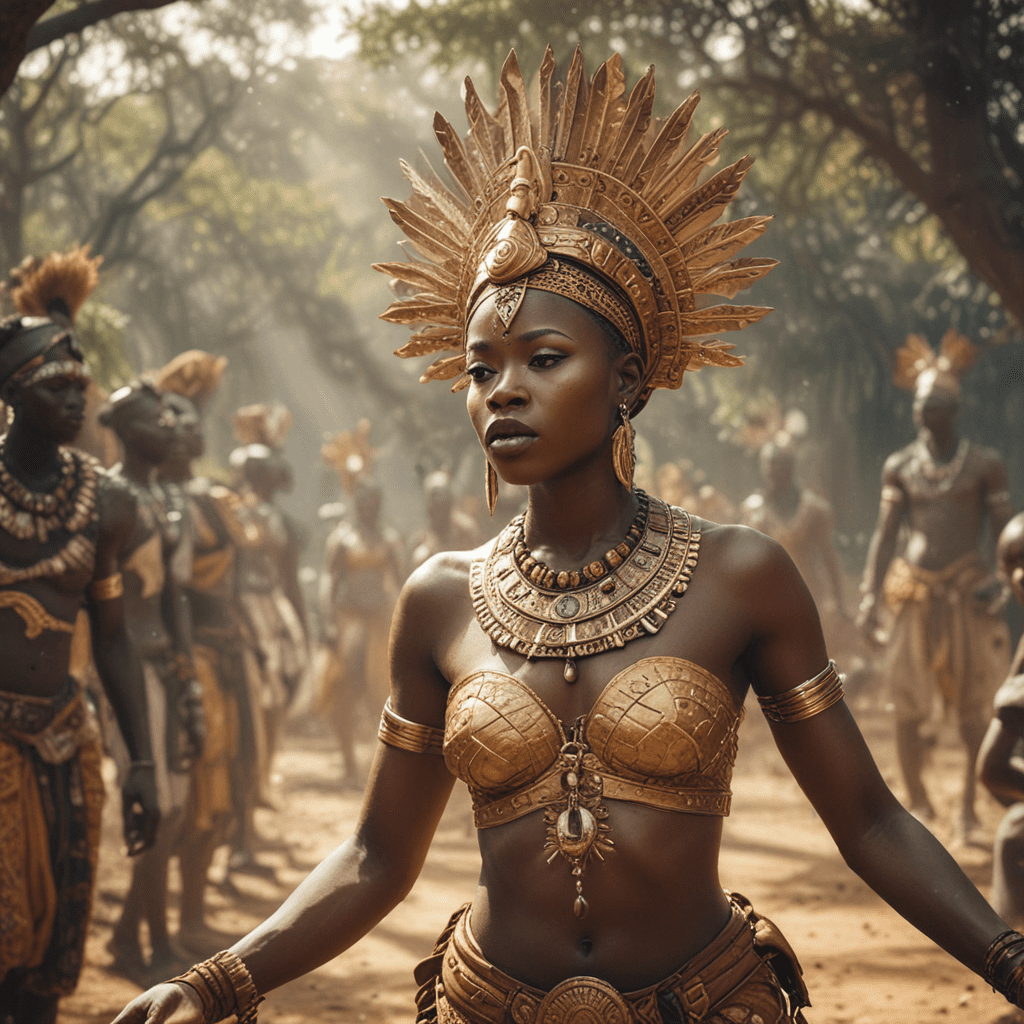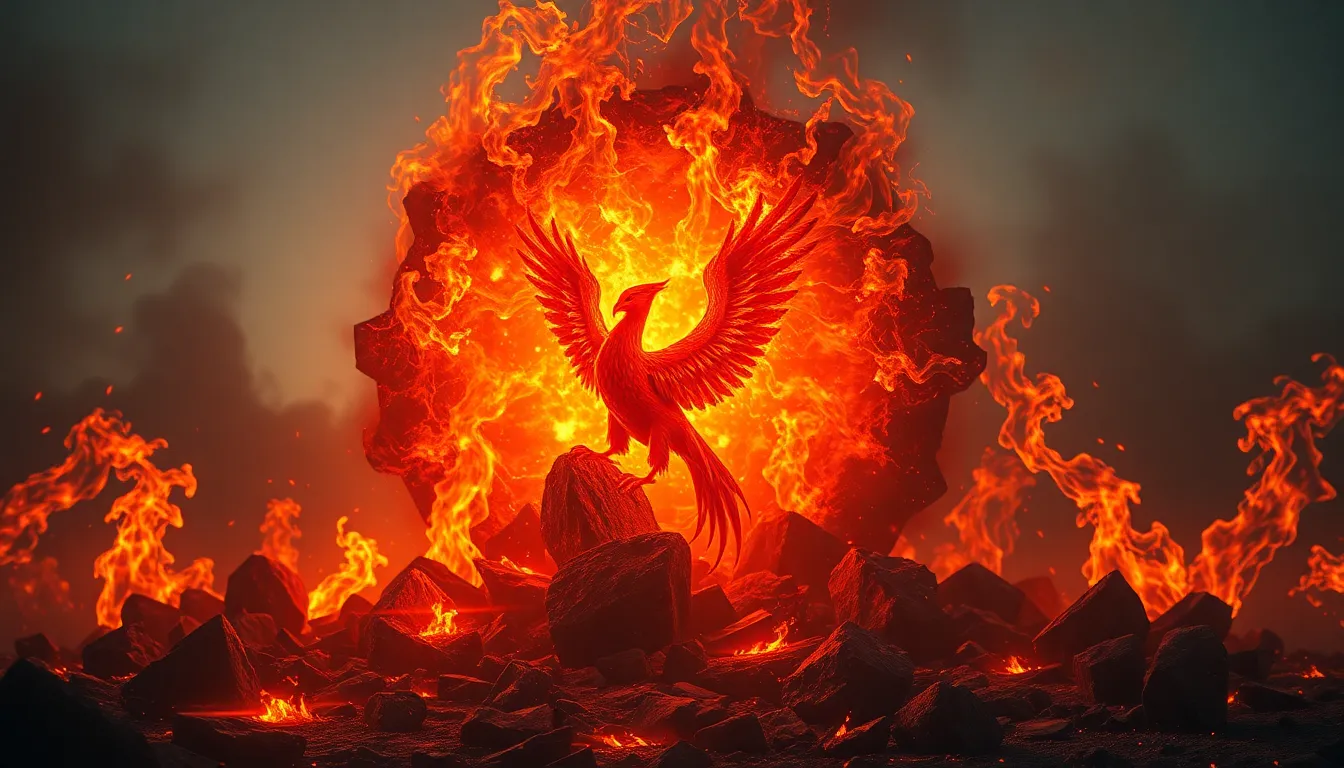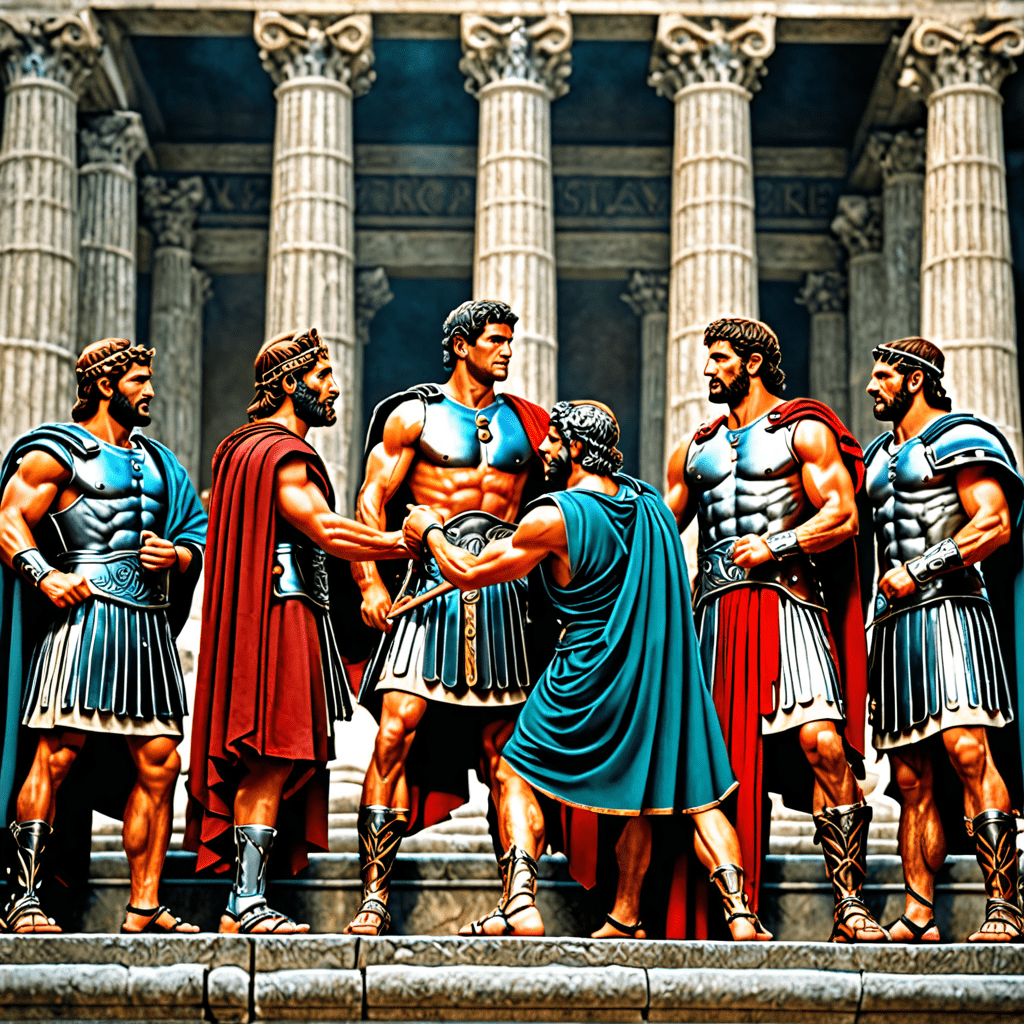The Rich Tapestry of Thai Mythology
Thai mythology is a rich and vibrant tapestry woven with ancient beliefs, stories, and legends that have been passed down through generations. It reflects the cultural heritage and spiritual traditions of the Thai people, offering insights into their values, beliefs, and worldview. From epic tales of gods and heroes, to stories about spirits and mythical creatures, Thai mythology encompasses a diverse range of narratives that capture the imagination and inspire awe. These stories provide a window into the past, offering glimpses of ancient Thai society and its fascinating beliefs. The stories are often intertwined with spiritual practices, rituals, and ceremonies that continue to play a significant role in Thai life.
Origins and Influences
The origins of Thai mythology can be traced back to ancient animistic beliefs, where spirits and deities were believed to inhabit the natural world. These beliefs were further influenced by the arrival of Hinduism and Buddhism in Southeast Asia, which introduced new deities, concepts, and narratives to the region. The integration of these diverse influences resulted in a unique and multifaceted mythology that blends ancient animistic beliefs with Hindu and Buddhist themes.
The arrival of Hinduism, particularly the epic Ramayana, had a profound impact on Thai mythology. The Ramayana, an epic tale of love, duty, and the triumph of good over evil, became deeply embedded in Thai cultural consciousness and inspired the creation of the Ramakien, Thailand's national epic. The Ramakien, with its focus on righteous kings, courageous warriors, and the battle against evil forces, reflects the values and ideals that shaped Thai society.
Buddhism, with its emphasis on karma, reincarnation, and the pursuit of enlightenment, also contributed significantly to Thai mythology. Buddhist teachings and concepts are woven into many Thai stories, providing a framework for understanding the human condition, the relationship between cause and effect, and the importance of ethical conduct. The stories often explore themes of morality, fate, and the search for spiritual liberation, reflecting the core values of Buddhist teachings.
The Ramakien: Thailand’s National Epic
The Ramakien, a retelling of the Hindu epic Ramayana, is considered the national epic of Thailand. It is an epic poem that details the adventures of Rama, a righteous prince who is exiled from his kingdom and must overcome numerous obstacles to reclaim his throne and reunite with his beloved Sita.
The Ramakien is more than just a literary masterpiece; it is a cornerstone of Thai culture, serving as a rich source of moral lessons, heroic ideals, and artistic inspiration. The characters and stories from the Ramakien are deeply embedded in Thai art, literature, dance, and theater, and continue to resonate with audiences today.
The Ramakien is a tale of good versus evil, righteousness versus treachery, and the triumph of love and loyalty over adversity. It embodies the values of courage, wisdom, and selflessness that have been central to Thai society for centuries. The epic's enduring popularity reflects the enduring appeal of these timeless themes and its ability to captivate audiences across generations.
The Influence of Hindu Mythology
Hindu mythology has had a significant influence on Thai mythology, particularly the epic Ramayana. The Ramayana, with its captivating story of love, duty, and the triumph of good over evil, inspired the creation of the Ramakien, Thailand's national epic. The Ramakien, while drawing inspiration from the Ramayana, incorporates unique Thai elements and reflects the cultural context of Thailand.
Other Hindu deities and concepts have also found their way into Thai mythology, enriching its tapestry of beliefs and stories. The deities Brahma, Vishnu, and Shiva, representing the creative, preserving, and destructive forces of the universe, are revered in Thai culture and appear in various stories and rituals. The concept of karma, reincarnation, and the cycle of birth and death, central to Hindu beliefs, are also found in Thai mythology, shaping the worldview of the Thai people.
The influence of Hindu mythology has been significant in shaping Thai culture and its understanding of the world. From the epic tales of gods and heroes to the philosophical concepts of karma and rebirth, Hindu mythology has left an indelible mark on Thai beliefs and practices.
The Importance of Spirits and Deities
In Thai mythology, spirits and deities play a vital role in shaping the lives of humans and maintaining the balance of the natural world. These beings are believed to inhabit the earth, the sky, and the water, influencing everything from weather patterns and harvest yields to human fortune and misfortune.
Thai people believe in a wide array of spirits, each with its own unique characteristics, powers, and domains. Some spirits are benevolent and protective, while others are mischievous and even malevolent. Among the most revered deities are the four guardian spirits of the cardinal directions, who are believed to protect the kingdom and its people from harm. These deities are often invoked in rituals and ceremonies, seeking their blessings and protection.
The belief in spirits and deities is deeply ingrained in Thai culture and daily life. People offer prayers and make offerings to these beings to appease them, seek their favor, and ensure their wellbeing. Temples and shrines dedicated to spirits and deities are common throughout the country, serving as places of worship and pilgrimage.
The importance of spirits and deities in Thai mythology highlights the interconnectedness between humans and the natural world and reinforces the belief in a spiritual dimension that influences the lives of all beings.
The Role of the Supernatural
In Thai mythology, the supernatural plays a crucial role, shaping the lives of humans and influencing the course of events. From mythical creatures to magical powers and mystical realms, the supernatural permeates Thai stories and beliefs, adding an element of wonder and mystery to their world.
Mythical creatures, such as the Naga (serpent deities), the Garuda (mythical bird), and the Yak (demon), are frequently depicted in Thai art and literature, symbolizing different forces and embodying various aspects of the natural world. These creatures are often associated with specific powers and abilities, contributing to the magical and fantastical elements found in Thai mythology.
Magical powers are also prevalent in Thai mythology, with individuals possessing special abilities or wielding supernatural forces. These powers are often derived from spiritual practices, blessings from deities, or the inheritance of ancestral knowledge. Stories often depict individuals using their magical powers to protect their communities, perform feats of strength, or seek revenge.
Mystical realms, such as the celestial realms of heaven and the underworld, are also integral to Thai mythology. These realms are often depicted as vibrant and ethereal places, populated by deities, spirits, and legendary creatures. Stories often explore journeys to these mystical realms, where humans encounter divine beings, face trials and tribulations, and gain wisdom and understanding.
The supernatural, with its blend of mythical creatures, magical powers, and mystical realms, adds a layer of enchantment and intrigue to Thai mythology. It reflects the Thai people's belief in a spiritual dimension, where powerful forces and magical beings interact with the human world, shaping destinies and influencing the balance of life.
Theories of Creation
Thai mythology offers various theories about the creation of the universe, reflecting the blending of ancient beliefs with Buddhist and Hindu influences. One common theory, influenced by Hindu cosmology, suggests that the universe emerged from a cosmic egg, representing the potential for all creation.
Another theory, drawing from Buddhist teachings, proposes that the universe is cyclical, undergoing repeated cycles of creation, destruction, and rebirth. This idea of cyclical time is reflected in the concept of karma and reincarnation, where actions have consequences that influence the cycle of birth and rebirth.
Thai creation myths often feature deities and mythical creatures playing crucial roles in shaping the world. The creation of the earth, the heavens, and the inhabitants of the world are often attributed to the actions of powerful beings who wielded mystical powers. These stories highlight the importance of divine intervention and the role of spiritual forces in the origins of the universe.
Thai creation myths provide insights into the Thai worldview, emphasizing the interconnectedness of all things and the belief in a spiritual dimension that influences the physical world. They offer explanations for the origins of the universe and the diverse forms of life that inhabit it, reflecting the Thai people's reverence for nature and their belief in the power of the divine.
The Cycle of Reincarnation and Karma
The concept of reincarnation and karma is central to Thai mythology, shaping the understanding of life, death, and the journey of the soul. Reincarnation, the belief that the soul is reborn into another life after death, is a fundamental principle of Buddhist teachings. Karma, the law of cause and effect, governs the cycle of rebirth, determining the conditions of one's future life based on actions in previous lives.
Thai mythology often depicts stories of characters who face the consequences of their past actions, either in the form of suffering or prosperity. These narratives illustrate the importance of ethical conduct, encouraging individuals to cultivate virtues such as compassion, generosity, and wisdom.
The belief in reincarnation and karma provides a framework for understanding human suffering and encourages individuals to live virtuously, seeking to improve their karma and attain liberation from the cycle of rebirth. These concepts are deeply embedded in Thai culture, influencing social values, moral principles, and spiritual practices.
The belief in reincarnation and karma highlights the cyclical nature of life and the interconnectedness of all beings. It encourages individuals to strive for a virtuous life, seeking to break the cycle of suffering and attain enlightenment.
Traditional Storytelling and Performances
Thai mythology has been passed down through generations through traditional storytelling and performances. These forms of storytelling play a vital role in preserving and transmitting cultural heritage, values, and beliefs.
Storytelling
Stories have been a primary means of sharing knowledge and entertainment among Thai people for centuries. Elderly storytellers, known as "Kaew," have traditionally played a crucial role in preserving and transmitting stories, sharing them with younger generations through oral traditions. Storytelling often takes place at gatherings, festivals, and ceremonies, providing an opportunity for communities to come together and connect through shared narratives.
Performances
Thai mythology is also expressed through various forms of performances, including dance, theater, and puppetry. These performances often depict epic tales from Thai mythology, such as the Ramakien, using intricate costumes, vibrant music, and elaborate choreography. These performances are not only entertaining but also serve as a means of teaching moral lessons, highlighting cultural values, and strengthening community bonds.
These traditional forms of storytelling and performance ensure that Thai mythology continues to thrive and inspire future generations. They provide a window into the cultural history and spiritual beliefs of the Thai people, offering a rich tapestry of narratives that captivate the imagination and inspire awe.
Modern Interpretations of Thai Mythology
Thai mythology continues to evolve and inspire contemporary artists, writers, and filmmakers, who reinterpret ancient stories through modern lenses. These modern interpretations reflect a contemporary understanding of traditional beliefs and offer fresh perspectives on timeless themes.
Contemporary Thai novels, films, and graphic novels often draw inspiration from Thai mythology, reimagining characters, stories, and themes for a modern audience. These works explore the relevance of ancient beliefs in contemporary society, offering insights into the human condition, the power of nature, and the search for meaning.
Modern interpretations of Thai mythology demonstrate the enduring power of these stories to resonate with audiences across generations. They highlight the adaptability of mythology and its ability to adapt to changing times while preserving core values and beliefs.
FAQ
What are some popular figures in Thai mythology?
Some popular figures in Thai mythology include:
- Rama: The hero of the Ramakien, a righteous prince who is exiled and must overcome numerous obstacles to reclaim his throne.
- Sita: Rama's beloved wife, a symbol of virtue and loyalty.
- Hanuman: The monkey god, a loyal and powerful ally of Rama, known for his strength and devotion.
- Phra Phrom: The creator deity, often depicted with four faces and four arms, representing the four directions.
- Phra Vishnu: The preserver deity, associated with maintaining balance and order in the universe.
- Phra Shiva: The destroyer deity, representing the cyclical nature of life and destruction.
What are some important themes in Thai mythology?
Some important themes in Thai mythology include:
- The struggle between good and evil: Many stories depict the conflict between righteous forces and evil beings, highlighting the importance of morality and virtue.
- The power of karma and reincarnation: The belief that actions have consequences, shaping the cycle of birth and rebirth, is a central theme in Thai mythology.
- Respect for nature: Thai mythology emphasizes the interconnectedness of humans and the natural world, promoting a reverence for nature and its spiritual forces.
- The importance of family and community: Many stories celebrate the strength of family bonds and community spirit, emphasizing the value of loyalty and support.
- The search for spiritual enlightenment: The pursuit of wisdom, liberation, and a deeper understanding of the universe is a recurring theme in Thai mythology.
How does Thai mythology influence Thai culture?
Thai mythology has a profound influence on Thai culture, shaping:
- Art and literature: Mythic figures and stories are depicted in traditional paintings, sculptures, dance, and theater.
- Religious beliefs and practices: Mythology is intertwined with religious beliefs and rituals, influencing ceremonies and festivals.
- Social values and morals: Stories from mythology offer moral instruction, providing guidance on ethical behavior and social responsibility.
- National identity: The Ramakien, Thailand's national epic, is considered a cornerstone of Thai identity, reflecting the nation's values and history.
Is Thai mythology still relevant today?
Thai mythology remains relevant today by:
- Providing a sense of history and identity: Stories offer a connection to the past and a shared cultural heritage for the Thai people.
- Inspiring creativity and innovation: Contemporary artists, writers, and filmmakers continue to draw inspiration from traditional myths, reinterpreting themes and creating new works.
- Offering moral guidance and spiritual insights: The timeless themes of mythology continue to offer wisdom and reflections on the human condition.
Thai mythology continues to be a powerful force in Thai culture, offering a rich tapestry of stories, beliefs, and traditions that continue to inspire and enrich the lives of the Thai people.



